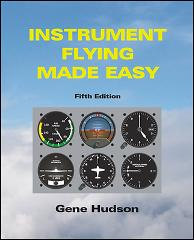My latest read is Instrument Flying Made Easy by Gene Hudson.
The author draws on thousands hours of teaching instrument flying to provide you with a new, unique approach to attitude instrument flying which improves your flying performance while reducing workload. Here the ‘Thirteen Deep, Dark Secrets’ of attitude instrument flight—methods you can implement on your next flight. Gene starts out by tossing out almost every traditional method of attitude instrument flying, and builds his own, more effective and easier to learn process from the ground up.
What this book lacks is how to deal with glass panel displays. It’s very good for steam gauge flying. Glass scans are different in nature as they are more precise and the information here would need to be modified. Basically the author talks a lot about the following:
- Keeping a light touch (if any) on the controls…the more you trim, the less you touch, the less you screw up.
- Stop looking at gauges that do not matter or are represented better by other instruments.
- Step on the high wing – and I was always worried about the ball.
- Memorize your planes performance and what to expect in all stages of flight. (cold)
- Use yaw more on approaches to make corrections rather than large changes with yoke.
- Use different scans such as the Inverted-V Scan, Constant Vertical Speed Scan, Modified-V Scan and Power Scan.
It’s always good to read a different points of view when it comes to scanning. Your experience will depend on your instructors method of training. However, if you feel that your CFI might not know what they are doing, the information in this book might hold a few golden nuggets for them as well.



One response
This is not “The Hudson System.” He tries to make everyone believe it’s “his,” but people have been teaching this method of scanning for years.. Even the air force teaches a version of this……